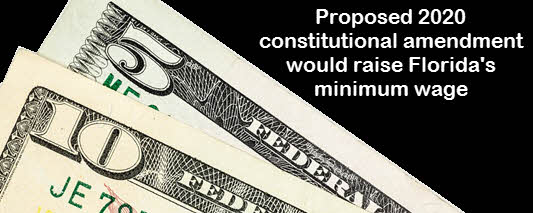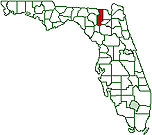Financial Impact Conference: Proposed FL minimum-wage hike won’t reduce Medicaid rolls
Posted April 17, 2019 06:15 am

TALLAHASSEE – Raising the minimum wage from $10 an hour in 2021 by a dollar a year to $15 an hour in 2026 would increase the state’s sales tax revenues, but probably not dramatically reduce the number of state residents who qualify for public assistance and Medicaid.
Those are among preliminary determinations bantered about by state economists and legislative analysts Monday during a Financial Impact Estimating Conference workshop on a proposed 2020 constitutional amendment that would raise Florida’s minimum wage.
The two-and-a-half-hour workshop precedes a Friday presentation by the Financial Impact Estimating Conference on how the proposed minimum wage increase would affect the economy.
Florida For a Fair Wage is sponsoring the ballot initiative, which would riase Florida’s minimum wage to $10 an hour on Sept. 30, 2021, and increase it by an additional $1 an hour each year, capping at $15 an hour on Sept. 30, 2026.
Orlando attorney John Morgan, who spearheaded the 2016 ballot drive that legalized medical marijuana, contributed $373,259 in March to the measure, according to Florida For A Fair Wage’s April 12 financial report filed with the state.
Morgan and his law firm have, thus far, accounted for all but $15 of the $979,655 that Florida For A Fair Wage has raised since it was formed in 2017.
Florida voters in 2004 passed a constitutional amendment that ties the minimum wage to the Consumer Price Index, which tracks price changes for things such as food, shelter, transportation and energy on a year-to-year basis.
Florida’s minimum wage increased by 21 cents an hour in 2019 to $8.46 an hour, the largest cost-of-living hike since 2012.
Florida For A Fair Wage will need to collect 766,200 signatures from Florida voters to get the measure on the 2020 ballot. It has secured the 10 percent of that total requirement for a Florida Supreme Court review of the proposed ballot language.
Monday’s workshop and Friday’s presentation are part of the process in securing the measure’s place on the November 2020 ballot. Constitutional amendments require a 60-percent majority to pass.
On Monday, as they sorted through the vast realm of data and case studies analyzing how minimum wage hikes elsewhere have unfolded, the theme most shared by state economists and legislative analysts in crunching the numbers was “inconclusive.”
Preliminary estimates provided by state agencies, including the Department of Corrections [DOC], Department of Children Families [DCF] and some of the state’s 67 K-12 public school districts, indicate the effects of the proposed wage scale don’t surface in forecasts until the minimum wage gets to $13 an hour in 2024.
The DOC forecast it would pay $4 million more in base salaries once the minimum wage gets to $14 an hour in 2025. DCF estimates the additional salary costs it would incur would go from $700,000 at $14 an hour in 2025 to $4 million when it goes to $15 an hour in 2026.
Florida Office of Economic Development [OED] Director Amy Baker said the goal in presenting a comprehensive report that analyzes the impacts is finding a point where minimum wage hikes have “a binding effect that start bringing in additional costs and issues.”
Baker said raising the minimum wage should elevate people out of the poverty eligibility for Medicaid and other government assistance programs, but cautioned that it is unlikely to have a dramatic impact.
More than 52 percent of the state’s 4 million Medicaid beneficiaries are children with the remaining mostly the elderly, pregnant women and SSI beneficiaries.
“Our programs in Florida are more condition-related and may not involve people who are working at minimum wage or any other salary,” Baker said. “It could have an effect on the upper margins but it can’t be quantified.”
Baker said the data is also inconclusive in ascertaining how minimum wage hikes affect other workers’ salaries.
The “ripple upwards on prevailing wage rates beyond the minimum wage threshold” appears to occur, she said, but appears limited to “the next bracket up.”
The “spillover effects” are likely to have more impact on employers at the lower rates – at $10 to $12 an hour – than at the upper range where the impacts are “less certain,” Baker said.
“I think it is worth including [in the presentation] because, certainly, we saw that issue mentioned repeatedly in the surveys that the ‘ripple effect,’ at the minimum, is going to spill into the next bracket up,” she said. “I’m not proposing to put a number on it, but include the issue and the point that the literature kind of suggests there may be an impact on the next bracket up.”
-------------------------------
This piece appeared in the Watchdog.org and was reprinted by the Columbia County Observer with permission or license.
Layout and image, the Columbia County Observer

 By
John Haughey
By
John Haughey